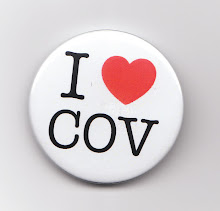
In 2007 Estonia successfully held a parliamentary election that incorporated the internet as a voting method. The idea to use the internet as part of their voting system was first conceived by the Estonian government in 2001. As the idea developed they included it in the October 2005 general elections and once successful it was used in the parliamentary elections.
One of the reasons that internet voting or e-voting was so effective in Estonia was the fact that the country utilises an I.D card system. These I.D cards were incorporated into the voting system to ensure security, which was one of the initial concerns of the system when initially conceived. As of March 2007 over 1.04 million cards have been issued out of a population of about 1.32 million, which makes internet voting accessible to the vast majority of the country.
While internet voting is an idea that makes voting more accessible only 30,000 votes were done online, which is one in thirty voters. This however succeeded exceeded government expectations. BBC News reports, "those running the Estonian e-voting project hope that 20% of votes cast in future elections will be registered in this way
This, the largest-scale e-voting scheme run by any EU country, is being keenly watched across Europe. Online voting has been promoted as a quicker, cheaper way of collecting and counting ballots. Those concerned about falling turnout in elections hope that the convenience of not having to go to a polling station will encourage more people to take part.
But there are worries about security. In Switzerland, where it is already an established part of local referendums, voters get their passwords to access the ballot through the post. The Estonians say their system avoids such problems because people already have their micro-chipped ID cards and know the PIN codes to use them. But there are still fears that an online ballot makes it far easier to influence elections.
To tackle that problem, the Estonian election allows multiple online votes to be cast, with each subsequent vote cancelling out the previous one.And the system still gives supremacy to paper ballots, so anyone who voted online can also go to a polling station on Sunday and vote in the traditional way, cancelling out the vote they cast online."
While there are some doubts about internet voting I think that with developments in security this is an idea that eventually will be exported on a global scale. Now that we can order goods at the click of a button and book doctors appointments by a simple text message it seems that politics must move forward in a similar way to stay relevant to younger generations.
Another key advantage of internet voting is its improved accessibility. Actually going to a voting station on a given day can be demanding. It can mean and early rise or a detour on the way home from work in a society that is working increasingly longer hours. Doing a postal vote can be an even more long winded process to so giving people access to vote from home, at work or abroad is a key innovation that I believe can improve voter turnout and is a system that represents a new generation of people.
An Estonian advert for internet voting
http://news.bbc.co.uk/1/hi/world/europe/6407269.stm
http://www.nytimes.com/2007/02/22/technology/22iht-evote.4691301.html
http://www.vvk.ee/index.php?id=11178

No comments:
Post a Comment